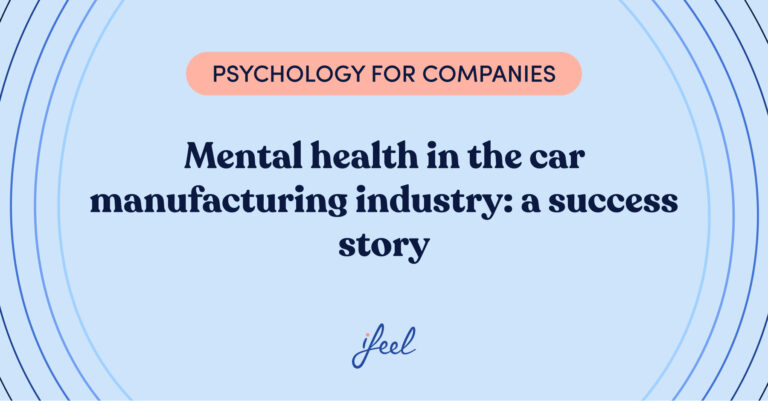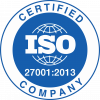Measuring productivity in the workplace is a fundamental process in any company that wants to operate strategically and efficiently to achieve its objectives. This process involves different levels of the organization: the employee who evaluates themselves, their manager – who evaluates them – and the senior management who assesses the company’s overall productivity.
Therefore, measuring productivity in the workplace is related to a form of criticism of our own way of organizing the tasks assigned to us and our success in fulfilling the functions of our position. To evaluate it, we must take into account the influence of our own decisions but also that of the circumstances in which we have had to work.
As we have just pointed out, this evaluation process involves a form of criticism of the work of others, perhaps that of the people we are in charge of if we are team managers.

It also refers to what strictly human aspects (either from the individual or from the group) can exert a beneficial or pernicious influence on the achievement of the objectives that the company has set, as well as with the indicators that have been selected to evaluate this performance in the most accurate way possible.
Measuring productivity in the workplace: why should we do it?
Measuring productivity in the workplace allows a continuous evaluation of the balance between resources employed and results obtained. This makes it possible to deliberately replicate decisions that have proven to be efficient and correct those processes that prove too costly in human and economic terms.
In short, measuring productivity at work allows everyone involved (employees, managers, executives, and other influential stakeholders) to know where the company is at any given time, to gauge better what goals it has set for the future or what issues it needs to address to anticipate problems and difficulties.
Factors influencing work productivity
Measuring productivity at work involves factoring in the effect of different aspects that contribute to the good performance and well-being of the workforce and others that hinder the team’s progress.
1. Factors that enhance productivity in the workplace
In this group, we would include, among others, constructive leadership, a positive work environment, a concrete career development perspective, access to quality training, living with a manageable turnover rate that does not force you to start from scratch with new colleagues over and over again, and enjoying strong work incentives.
2. Factors hindering productivity at work
Among the factors that hinder good productivity in the work environment are having poor leadership in charge of the team, breathing a hostile work environment, lacking a clear career development plan, not having training (both for recycling skills and acquiring new competencies), living with a high rate of labor turnover and lacking solid incentives.
Measuring productivity in the workplace
What criteria do we use to evaluate the results obtained usefully? Different criteria must be used to form a complete picture of the situation of measuring productivity in the workaplce.
1. Quantitative indicators
It is clear that the quantitative aspect, i.e., objective and with little room for discussion, is essential. So, let’s look at the objectives set in quantitative terms and compare them with the results obtained. We reach a first conclusion for measuring productivity in the workplace in an agile way: they have been achieved or, on the contrary, they have not been completed.
2. Qualitative indicators
However, numerical criteria should not be the only ones used – nor should they necessarily be the most relevant ones – when measuring productivity in the workplace. The reason is that, besides being practical, a company must be efficient. So, once it has been verified that the objectives have been achieved, the question must be asked at what cost the company has achieved a certain level of productivity.
Suppose the objectives are achieved at the cost of an increase in sick leave due to psychological problems, an increase in labor turnover, or a decrease in the employees’ satisfaction index with the company. In that case, productivity has been good quantitatively but can be improved in human terms.
Of course, if we want sustainable productivity, these costs must be corrected in the future, for example, by implementing a complete company well-being service such as the one ifeel offers its partners.

Protecting emotional well-being in organizations
At ifeel, we believe that it makes no sense to invest efforts and resources to achieve an objective if we do not know what we are actually investing in or if we do not know what results we have actually achieved. These types of inefficiencies worsen productivity and negatively affect employee motivation, generating a vicious circle that should be corrected so that the workforce’s well-being does not decline.
That is why at ifeel, we want to introduce you to our emotional well-being service for companies designed by our team of psychologists, experts in well-being at work, which allows managers in the area of People, Talent, and Human Resources to receive personalized and data-based advice on how to care for the psychological well-being of the teams they are in charge of. This way, they can prevent the increase in labor turnover in their organizations.
Do you belong to your organization’s Human Resources department? Try our program now to see how it could help you.
In addition, our program offers all employees a complete mental health care service that includes emotional support and online therapy with one of our professionals.
Moreover, in our Resources section, you can find different materials, such as Podcasts, HR Guides on various topics (e.g., employee experience or how to design a good HR strategy), or Interviews with leading HR managers. In addition, we have a Psychosocial Risk Factors Template, which you can use to comply with the requirements of the Labor Inspection.
We hope you found this post on measuring productivity in the workplace interesting. If you would like more information about our emotional well-being program for companies, all you have to do is request it, and we will contact your team as soon as possible.










